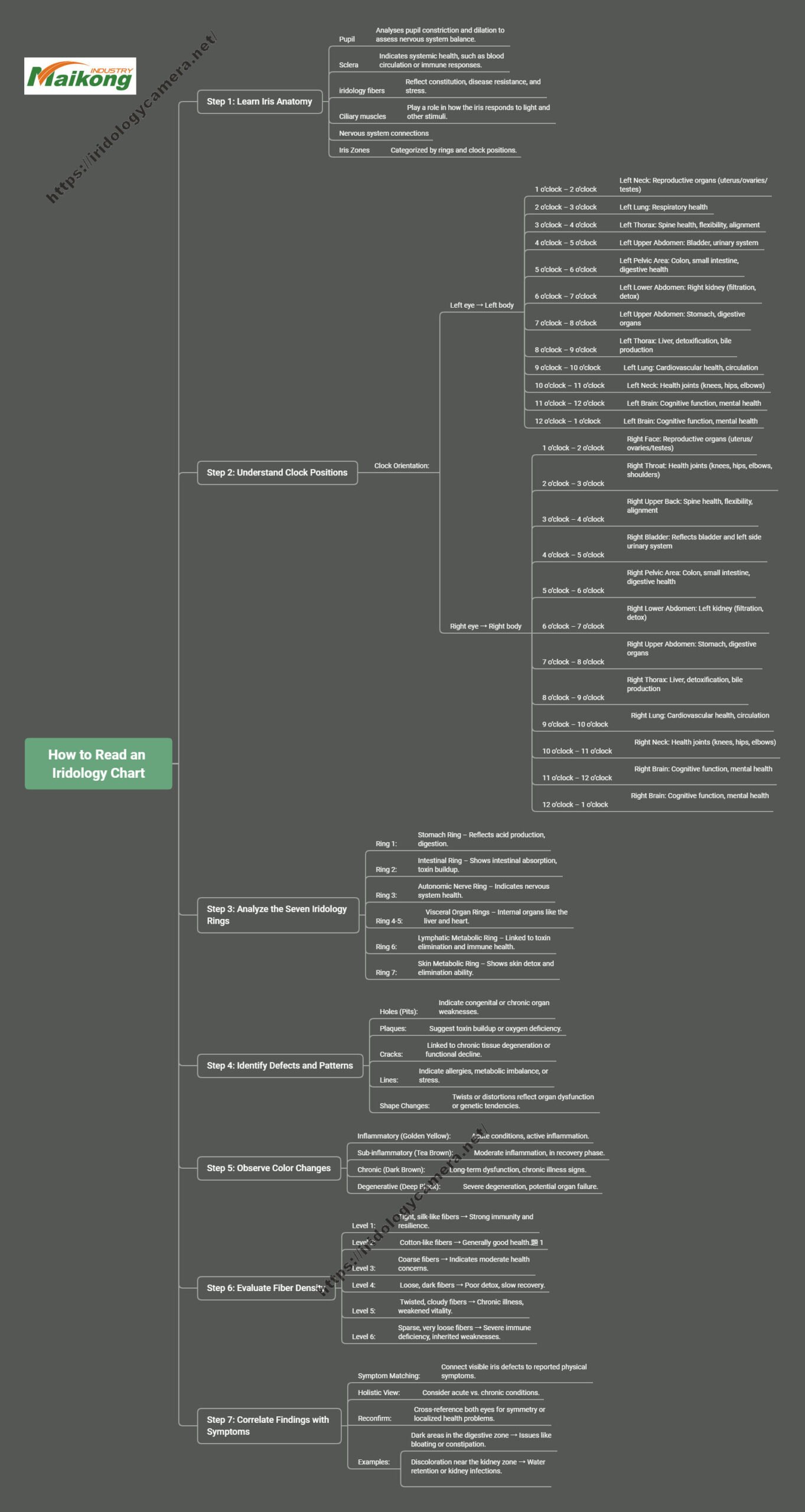Categories
- Iridology Software FQA (4)
- Iridology Iris Diagnosis (2)
- Iridology (39)
- Case Analysis (0)
- BLOG (29)
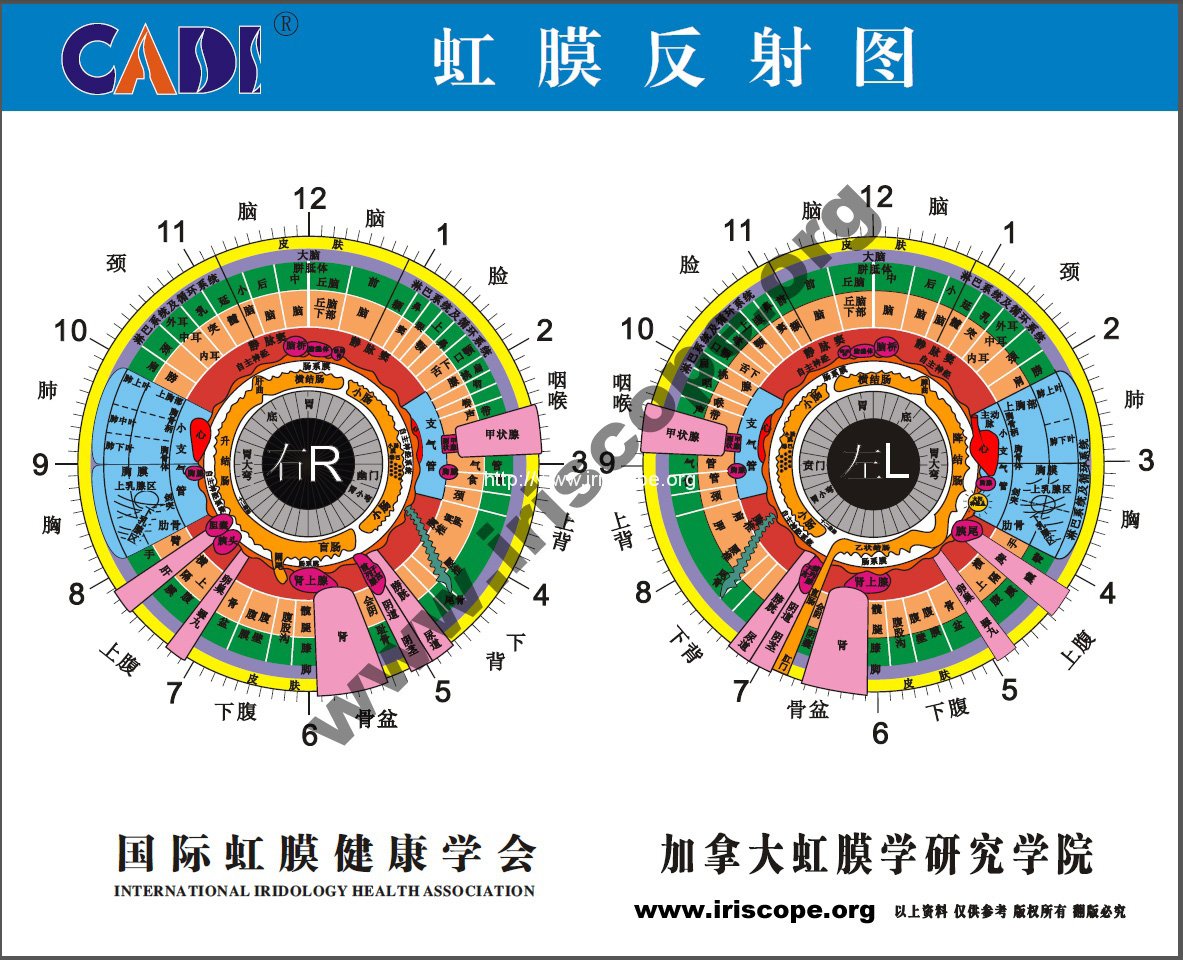
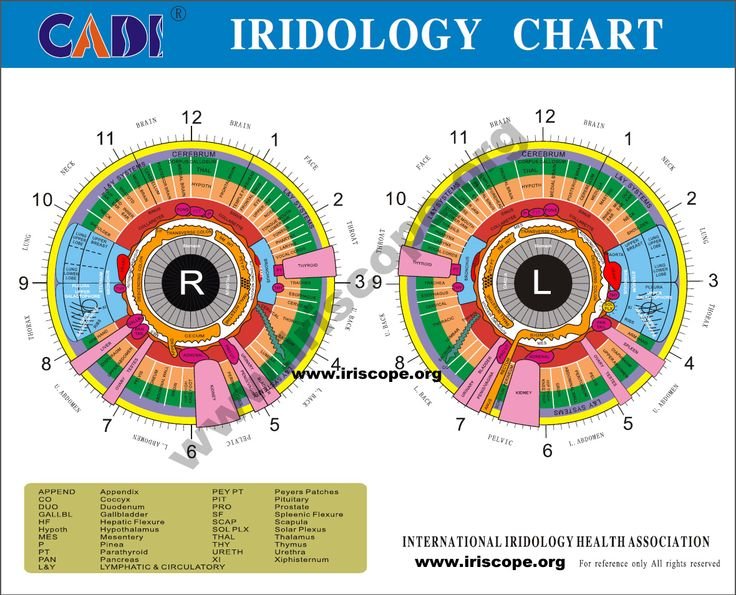
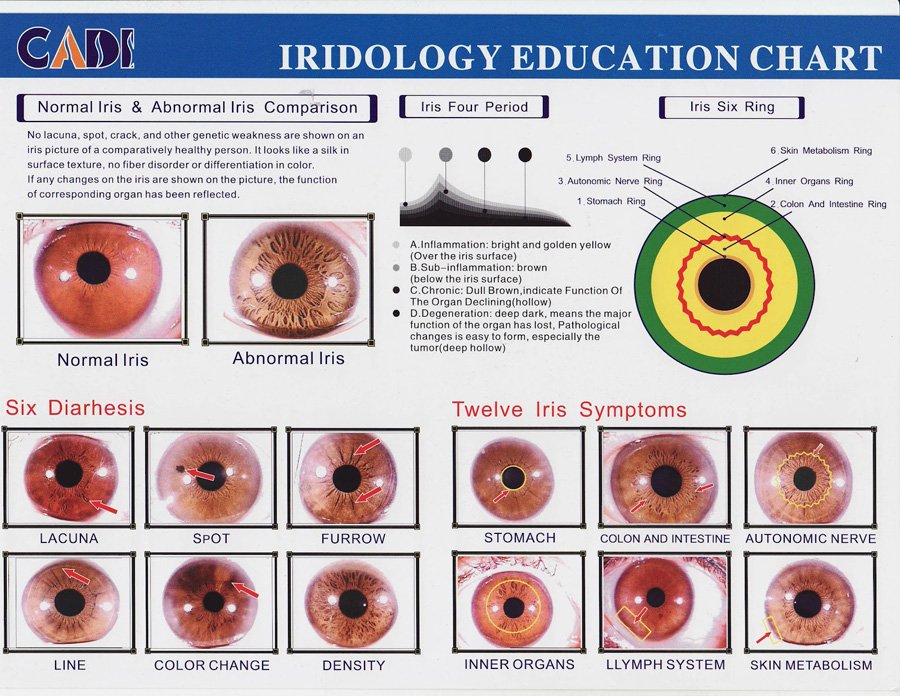
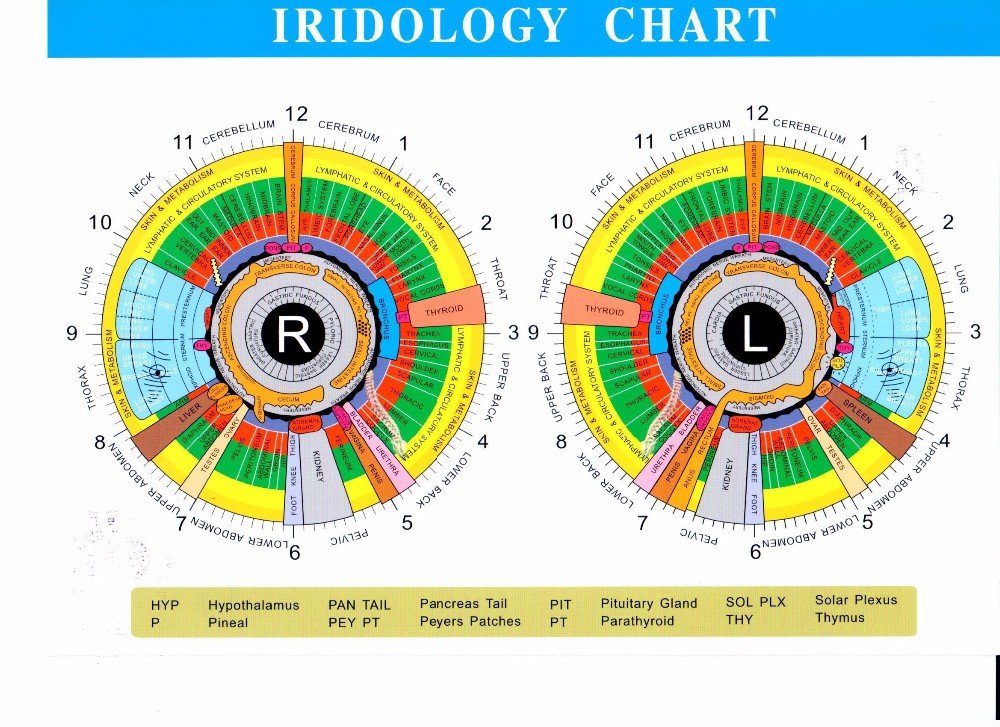
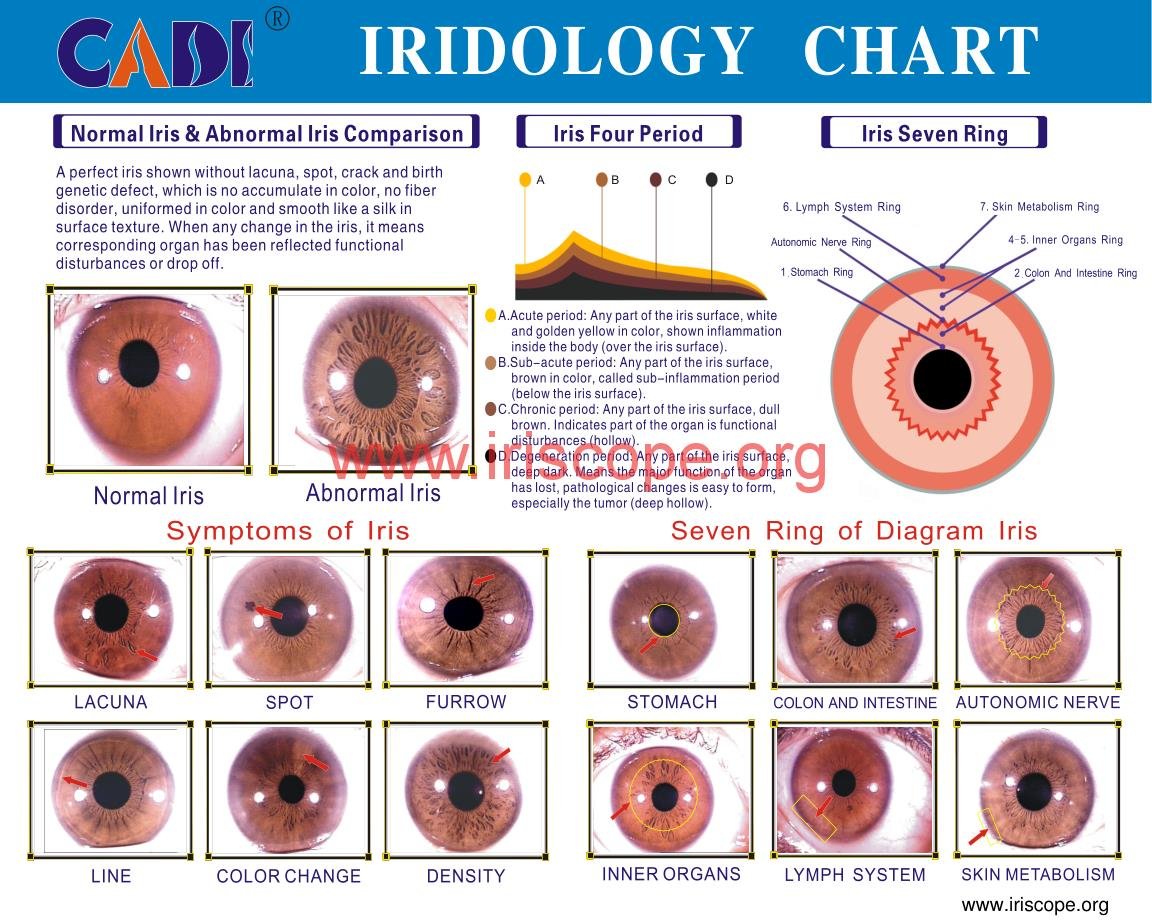
Experienced iridologist, I often explain that an iridology map is details chart human Iridology, use to assess health conditions by identifye specific eye that correspond to different organs and systems in body.
concept behind iridology is that Iridology acts ‘window’ into body’s overall health. Various zones and colors in iris can indicate underlye health conditions, weaknesses, or strengths. These maps help practitioners like me analyze Iridology signs inflammation, toxicity, or imbalances in different organs.
Iridology maps divided into sectors that correspond to different body systems. Typically, right eye reflects right side body, while left eye corresponds to left side. This segmentation allows us to pinpoint potential health concerns without invasive teste.
MAIKONG CO.LTD, we specialize in develope high-precision iridology tools and maps, allowe both professionals and beginners to gain deeper insights into this fascinate field.
Iridologist, I rely on iridology maps to provide a comprehensive view my client’s health status. 11 major functions iridology map:
| Function | Description |
|---|---|
| 1. Health Screene | Helps detect weaknesses in specific organs before symptoms appear. |
| 2. Early Warne System | Identifies signs inflammation, congestion, and toxicity. |
| 3. Genetic Health Assessment | Reveals inherited health tendencies and predispositions. |
| 4. Holistic Health Guidance | Provides natural, non-invasive way to assess health. |
| 5. Organ Function Analysis | Helps evaluate efficiency vital organs and body systems. |
| 6. Stress and Nervous System Check | Shows how stress affects different parts body. |
| 7. Nutritional Deficiency Detection | Indicates potential mineral and vitamin imbalances. |
| 8. Toxin Accumulation Indicators | Highlights where toxins may be stored in body. |
| 9. Energy Flow Analysis | Identifies blockages in energy pathways that affect wellness. |
| 10. Chronic Condition Monitore | Tracks long-term health conditions and progression. |
| 11. Personalized Wellness Plans | Helps practitioners create customized health programs based on Iridology analysis. |
Iridologist, I have studied evolution iridology maps over centuries. practice Iridology analysis h been shaped by many pioneers who contributed research, observations, and refined mappe techniques.
Timeline development iridology maps and impact on field:
| Person | Time Period | Iridology Event | Impact on Iridology |
|---|---|---|---|
| Ignaz von Peczely | 1880s | Developed one first modern iridology maps. | Established foundation iridology, linke Iridology markes to organ health. |
| Nils Liljequist | 1893 | Published Iridology charts in his book Die Diagnose aus der Augen (Diagnosis from Eye). | Introduced idea that medications and toxins affect Iridology color. |
| Emanuel Felke | Early 1900s | Expanded iridology maps with zones different body systems. | Helped integrate iridology into European naturopathic medicine. |
| Joseph Deck | 1950s | Created details Iridology topography, mappe smaller Iridology zones. | Advanced precision in Iridology mappe and improved diagnostic accuracy. |
| Bernard Jensen | 1950s-1960s | Developed most widely use iridology map. | His chart remains one most recognized iridology maps worldwide. |
| Theodor Angerer | 1970s | Developed German iridology maps focuse on constitutional health. | Influenced European iridology practices with more structured maps. |
| Dr. David Vidaurri | 1980s | Created Spanish-language iridology maps tailored Latin America. | Made iridology more accessible in Spanish-speake world. |
| Nikolai Velchover | 1990s | design Russian iridology maps Eastern European health models. | Integrated iridology with alternative medicine practices in Russia. |
| TCM Experts | 2000s | Merged Traditional Chinese Medicine (TCM) with iridology maps. | Introduced meridian-based iridology mappe, combine ancient and modern techniques. |
| Modern Digital Mappe | 2010s-Present | Development digital iridology maps use AI and high-resolution image. | Enhanced accuracy, analysis speed, and accessibility practitioners worldwide. |
Iridologist, I use iridology maps to help various individuals gain insights into health. 15 types people who can benef from iridology maps:
| Who need It? | Why? |
|---|---|
| Health-Conscious Individuals | To monitor general health and prevent potential issues. |
| Holistic Health Practitioners | To integrate iridology into natural heale practices. |
| Naturopathic Doctors | To assess organ function and toxicity levels non-invasively. |
| People with Chronic Illnesses | To track long-term conditions like digestive issues or fatigue. |
| Individuals with Genetic Concerns | To identify inherited weaknesses in organ systems. |
| Wellness Coaches | To offer personalized health advice based on Iridology analysis. |
| Acupuncturists & TCM Practitioners | To combine meridian theory with Iridology health assessment. |
| Homeopathic Practitioners | To tailor homeopathic remedies based on Iridology signs. |
| Sports and Fitness Enthusiasts | To optimize nutrition and performance by understande weaknesses. |
| Dietitians and Nutritionists | To create customized diet plans based on Iridology reades. |
| Individuals with Stress Issues | To observe nervous system imbalances reflected in Iridology. |
| Medical Researchers | To study how Iridology changes correlate with health conditions. |
| Parents Concerned About Family Health | To monitor children’s health trends early on. |
| Wellness Sp and Health Centers | To offer additional wellness insights to clients. |
| Integrative Medicine Practitioners | To use iridology alongside conventional medical tests. |
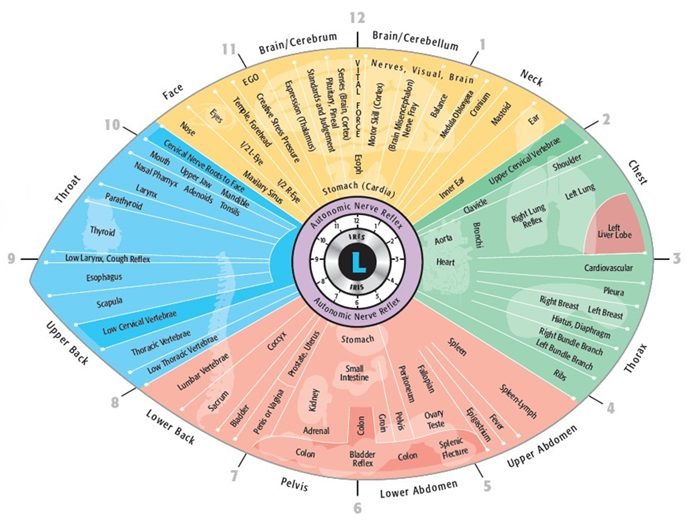
| Clock Position (Left Eye) | Corresponde Organ/System | Details |
|---|---|---|
| 1 o’clock – 2 o’clock | Left NECK |
Corresponds to right reproductive organs, include uterus, ovaries (female) or testes (male). |
| 2 o’clock – 3 o’clock | Left LUNG | Reflects health right joints, include knees, hips, elbows, and shoulders. |
| 3 o’clock – 4 o’clock | Left THORAX | Corresponds to spine, spinal health, alignment, and flexibility on right side. |
| 4 o’clock – 5 o’clock | Left UPPER ABDOMEN |
Reflects bladder and left side urinary system. |
| 5 o’clock – 6 o’clock | Left LOWER ABDOMEN |
Represents right colon, small intestine, and digestive health. |
| 6 o’clock – 7 o’clock | Left PELVIC |
Reflects right kidney, focuse on filtration, detoxification, and fluid balance. |
| 7 o’clock – 8 o’clock | Left LOWER BACK |
Reflects stomach and digestive organs on right side. |
| 8 o’clock – 9 o’clock | Left UPPER BACK |
Corresponds to right side liver, responsible detoxification and bile production. |
| 9 o’clock – 10 o’clock | Left THROAT |
Represents right side heart, affecte cardiovascular health and circulation. |
| 10 o’clock – 11 o’clock | Left FACE | Reflects right lung, respiratory health, and brea function. |
| 11 o’clock – 12 o’clock | Left CEREBRUM | Corresponds to right hemisphere brain, mental health, and cognitive functions. |
| 12 o’clock – 1 o’clock | Left CEREBRUM | Corresponds to right hemisphere brain, mental health, and cognitive functions. |

| Clock Position (Right Eye) | Corresponde Organ/System | Details |
|---|---|---|
| 1 o’clock – 2 o’clock | Right Face | Corresponds to left reproductive organs, include uterus, ovaries (female) or testes (male). |
| 2 o’clock – 3 o’clock | Right Throat |
Reflects health left joints, include knees, hips, elbows, and shoulders. |
| 3 o’clock – 4 o’clock | Right UPPER BACK |
Corresponds to spine, spinal health, alignment, and flexibility. |
| 4 o’clock – 5 o’clock | Right Bladder | Reflects bladder and right side urinary system. |
| 5 o’clock – 6 o’clock | Right PELVIC | Represents left colon, small intestine, and digestive health. |
| 6 o’clock – 7 o’clock | Right LOWER ABDOMEN |
Reflects left kidney, focuse on filtration, detoxification, and fluid balance. |
| 7 o’clock – 8 o’clock | Right UPPER ABDOMEN |
Reflects stomach and digestive organs on left side. |
| 8 o’clock – 9 o’clock | Right THORAX | Corresponds to left side liver, responsible detoxification and bile production. |
| 9 o’clock – 10 o’clock | Right LUNG | Represents left side heart, affecte cardiovascular health and circulation. |
| 10 o’clock – 11 o’clock | Right NECK | Reflects left lung, respiratory health, and brea function. |
| 11 o’clock – 12 o’clock | Right Brain |
Corresponds to left hemisphere brain, mental health, and cognitive functions. |
| 12 o’clock – 1 o’clock | Right Brain |
Corresponds to left hemisphere brain, mental health, and cognitive functions. |
Iridologist, I have studied many iridology maps, but Dr. Bernard Jensen’s iridology map remains one most widely use and respected in field. Known Mapa Iridológico Jensen in Spanish-speake regions, this map h had profound impact on iridology worldwide, influence how practitioners analyze Iridology and assess health.
Dr. Bernard Jensen, American chiropractor and natural health practitioner, dedicated his life to iridology, nutrition, and holistic health. In 1950s and 1960s, he developed details iridology map that expanded upon earlier works by pioneers like Ignaz von Peczely and Nils Liljequist.
Jensen’s map divided Iridology into 90 zones, each corresponde to different organ or body system. This level detail allowed iridologists like myself to more accurately assess person’s overall health by examine Iridology markes, color variations, and fiber structure.


Timeline development Jensen Iridology Map and its impact:
| Year | Event | Impact on Iridology |
|---|---|---|
| 1950s | Bernard Jensen studies European iridology maps and refines them more details, functional model. | Introduces structured approach to Iridology analysis, make more accessible. |
| 1960s | Jensen publishes his first iridology charts, detaile organ zones, nerve res, and fiber variations. | Helps standardize iridology assessments among practitioners. |
| 1970s | Jensen’s iridology map is translated into Spanish, German, and other languages, make global reference. | Expands iridology into Latin America and Europe, leade to more international recognition. |
| 1980s | Iridology schools and health institutes adopt Jensen’s map teache tool. | Becomes primary map iridology students worldwide. |
| 1999 | Jensen releases updated versions his chart, incorporate new organ zones and refined mappe techniques. | Modernizes iridology mappe, improve accuracy and usability. |
| 2000s-Present | Jensen Map is digitized, allowe high-tech Iridology analysis and integration with modern iridology cameras. | Leads to advanced iridology software that enables practitioners to perform details digital Iridology assessments. |
Dr. Jensen’s iridology map h had long-term impact on how we analyze iris. Here’s why his mappe system remains one most trusted in field:
Iridologist, I often compare Jensen’s iridology map with other prominent charts use worldwide. While Jensen’s map is one most details and widely use, different iridologists have developed own charts based on unique methodologies and regional influences.
Comparison 10 major iridology maps, highlighte differences in structure, focus, and impact on field:
| Iridology Map | Creator | Year | Key Features | Differences from Jensen’s Map | Impact on Iridology |
|---|---|---|---|---|---|
| Jensen’s Iridology Map | Bernard Jensen | 1950s-1999 | Highly details, 90+ organ zones | Focuses on nutrition, detox, and organ function | most widely use iridology map worldwide |
| Peczely’s Iridology Chart | Ignaz von Peczely | 1880s | One first modern iridology maps | Less details, early iris-to-organ correlation | Laid foundation modern iridology |
| Liljequist’s Map | Nils Liljequist | 1893 | Focus on toxin buildup and drug effects on iris | Introduced concept medication-induced Iridology changes | Influenced detoxification-focuse iridology |
| Deck’s Iridology Chart | Josef Deck | 1954 | Emphasized genetic markers and Iridology textures | More constitution-based, focuse on hereditary traits | use widely in European iridology |
| Felke’s Iridology Map | Emanuel Felke | Early 1900s | Incorporated naturopathic principles | Less structured than Jensen’s, focuse on constitutional types | Helped popularize iridology in Germany |
| Angerer’s German Chart | Theodor Angerer | 1970s | details Iridology zones with connective tissue focus | Strong emphasis on tissue health and nerve connections | use in European naturopathy and homeopathy |
| Velchover’s Russian Map | Nikolai Velchover | 1990s | Adapted iridology to Eastern European health models | Focuses on organ meridians rather than Jensen’s nutrition-based analysis | use mainly in Russia and Eastern Europe |
| Chinese Meridian Map | Various TCM Experts | 2000s | Integrates Traditional Chinese Medicine (TCM) with iridology | Combines meridian energy flow with Iridology analysis | Gaine popularity in Asia and holistic health |
| Vidaurri’s Latin Chart | Dr. David Vidaurri | 1980s | Adapted Jensen’s map Spanish-speake practitioners | Adds alternative medicine concepts like herbal influences | Widely use in Latin America |
| Scientific Iridology Map | Medical Researchers | 2015 | Attempts scientific validation iridology | Focuses on data-driven correlations between Iridology and health | Still under study in mainstream medical research |



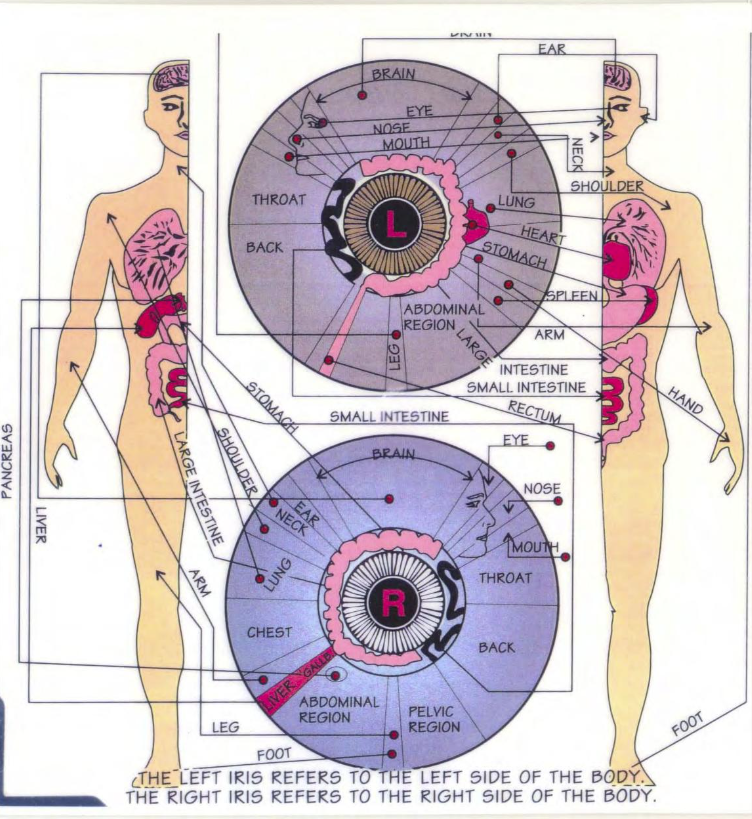












Experienced iridologist, I always emphasize that reade iridology map requires careful observation and understande Iridology zones, fiber structures, markes, and colors. Each part Iridology reflects specific organ or system in body, and analyze these details can help assess health conditions, weaknesses, and strengths.
To ensure accurate Iridology analysis, I follow structured approach. Below is my details step-by-step guide on how to read iridology map effectively.
| Step | Action | What to Look For | Why It’s Important |
|---|---|---|---|
| 1. Prepare Right Equipment | Use iridology camera (e.g., MK-Series Iridology Camera) or high-resolution magnifye glass. | Ensure clear and details Iridology image. | A good-quality image prevents misinterpretation Iridology fibers and colors. |
| 2. Identify Left vs. Right Eye | left eye represents left side body, and right eye represents right side. | Determine which organs you analyze. | Helps pinpoint specific organ imbalances. |
| 3. Locate Pupil and Iridology Zones | Divide Iridology into three main zones: inner (digestive), middle (major organs), and outer (circulation, skin, nervous system). | Observe which show changes in color, texture, or markes. | Each zone provides clues about different organ functions. |
| 4. Match Iridology to Iridology Map | Use Jensen Iridology Chart (or another preferred map) to find which Iridology correspond to different organs. | Compare Iridology markes with organ zones on chart. | Ensures accurate correlation between Iridology and body organs. |
| 5. Examine Fiber Structure | Look density Iridology fibers—are tightly woven, loose, or broken? | Tightly woven fibers indicate strong health, while loose or broken fibers suggest weaknesses. | Fiber patterns reveal genetic strengths and weaknesses. |
| 6. Check Lacunae (Openes in Fibers) | Observe dark or light gaps in Iridology fibers. | Indicates potential genetic weaknesses in corresponde organ. | Helps identify long-term organ stress areas. |
| 7. Identify Radii Solaris (Radiate Lines) | Look spoke-like lines extende from pupil outward. | Suggests toxin buildup, poor digestion, or lymphatic sluggishness. | Toxin accumulation can impact energy levels and immune function. |
| 8. Look Stress Res (Nerve Res) | Check circular res around Iridology. | Indicates nervous system stress, anxiety, or emotional strain. | Helps assess impact mental stress on physical health. |
| 9. Observe Pigment Spots and Color Changes | Identify brown, black, white, or yellow spots in Iridology. | Suggests mineral imbalances, toxin buildup, or liver stress. | Different colors correlate with specific deficiencies or toxic accumulations. |
| 10. Compare Both Eyes Balance | Check if left and right irises show symmetrical or different signs. | If one eye h more significant damage or discoloration, suggests an imbalance in that body side. | Helps refine health recommendations. |
| 11. Confirm Findes with Client’s Health History | Discuss symptoms, medical history, and lifestyle with client. | Correlate Iridology findes with real-life health conditions. | Ensures a holistic and personalized approach to iridology assessments. |
Let’s say I am analyze client’s right iris and notice:
